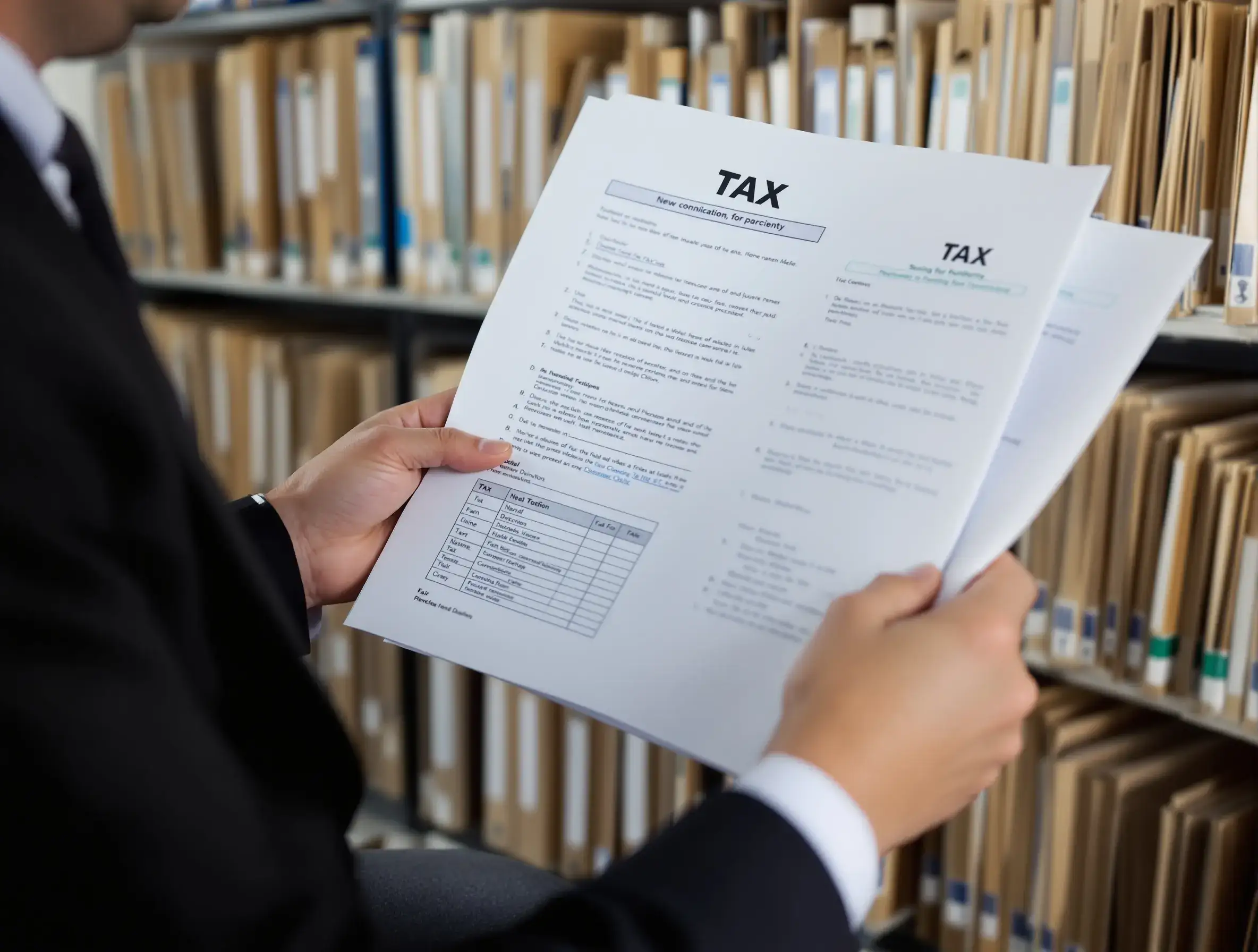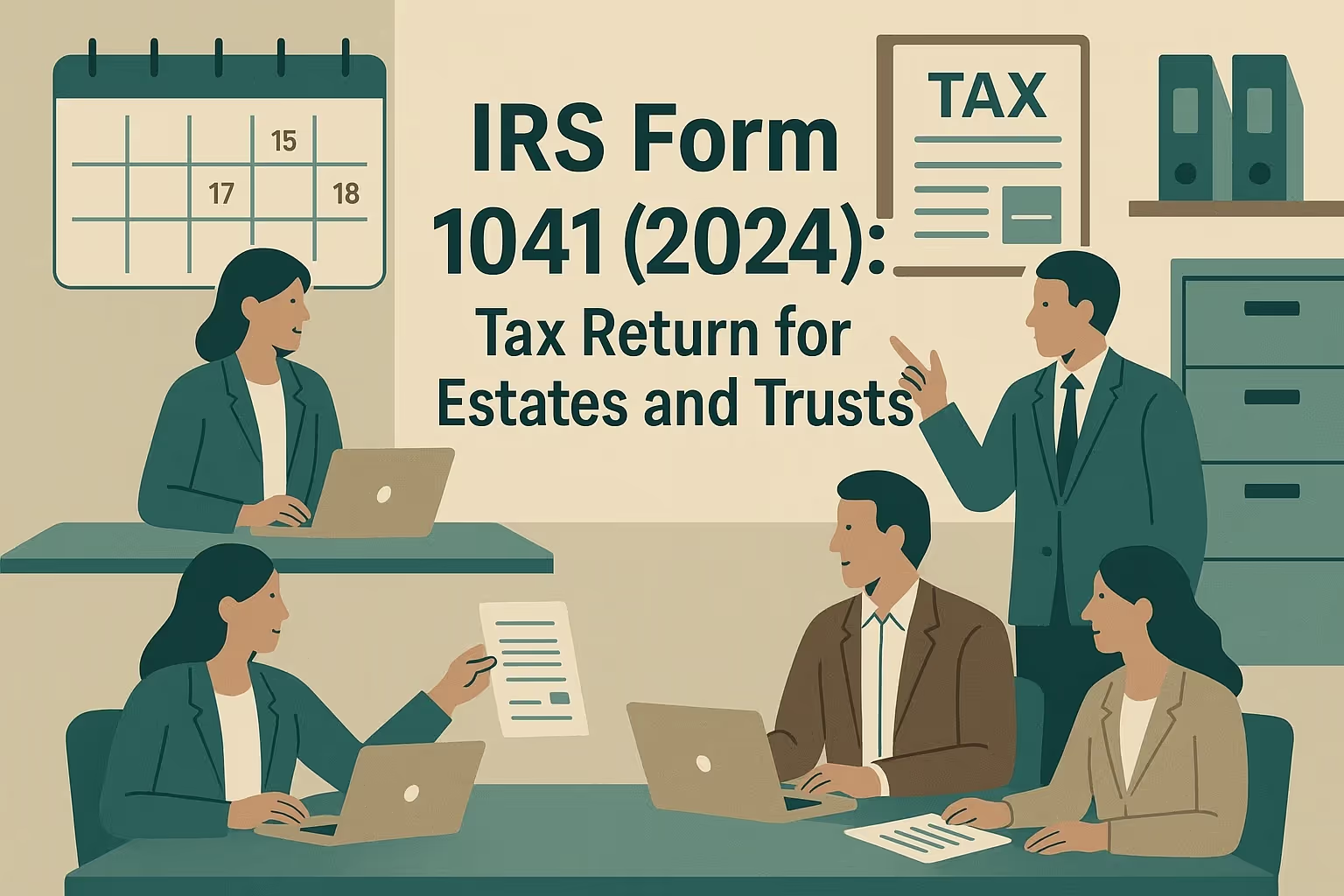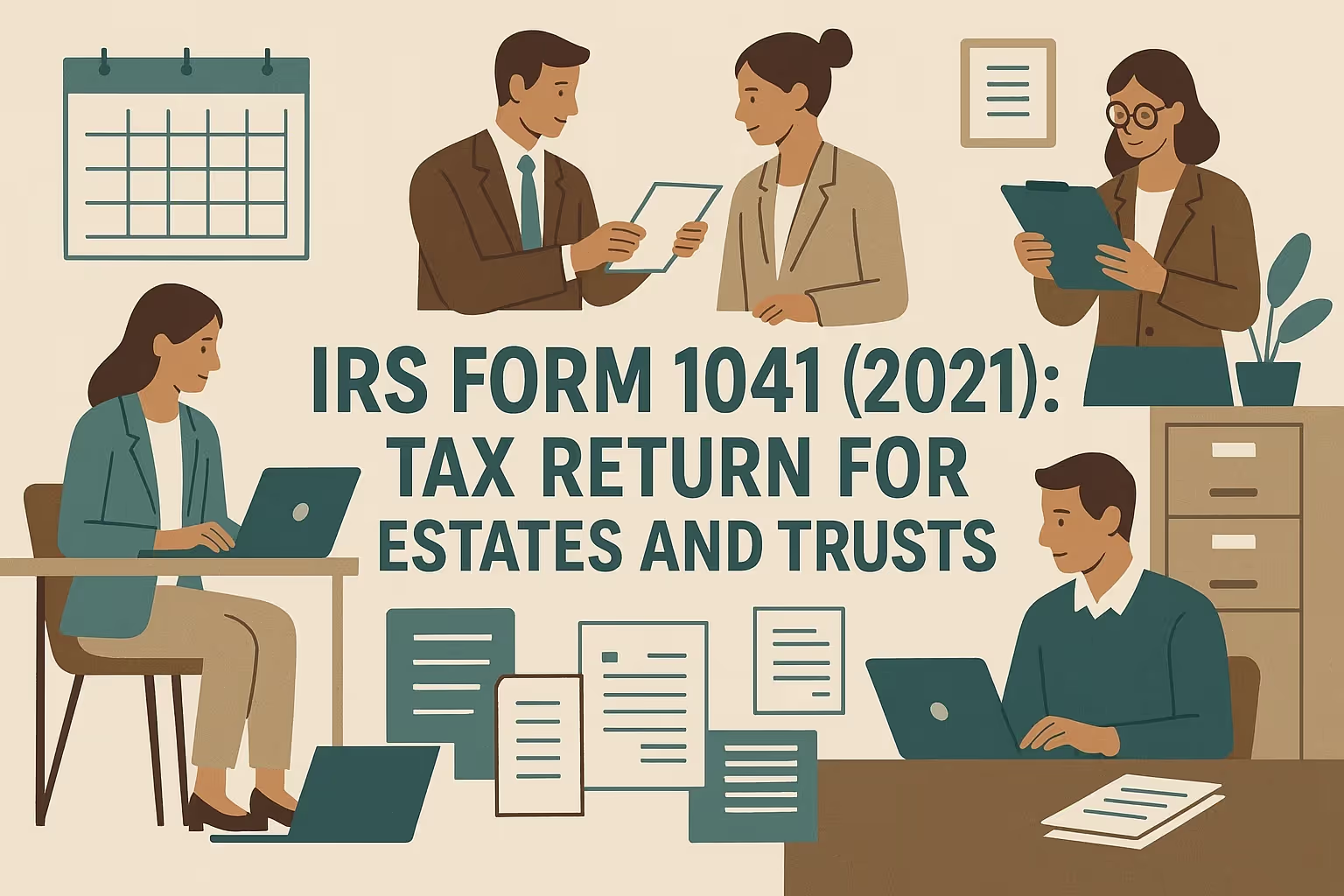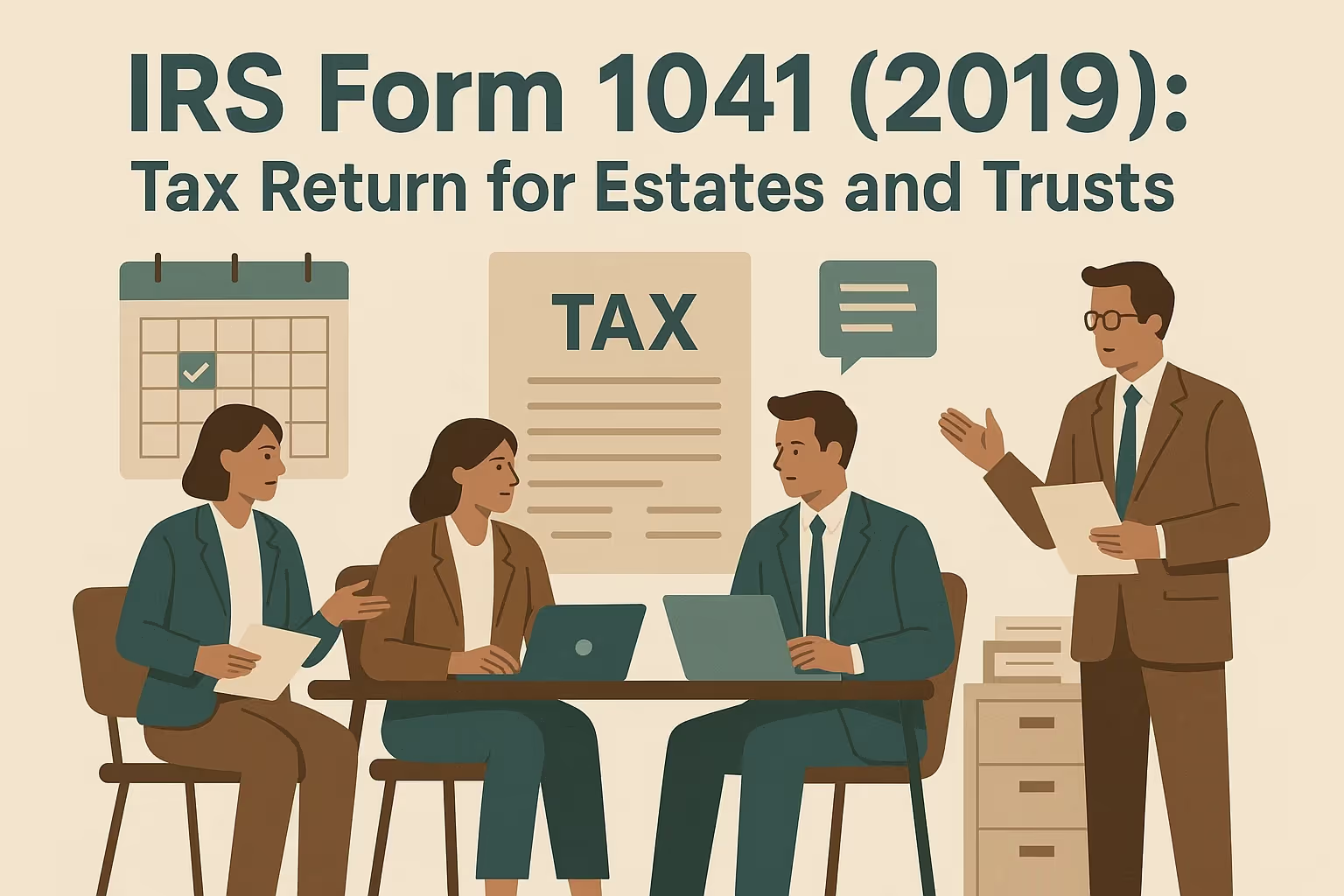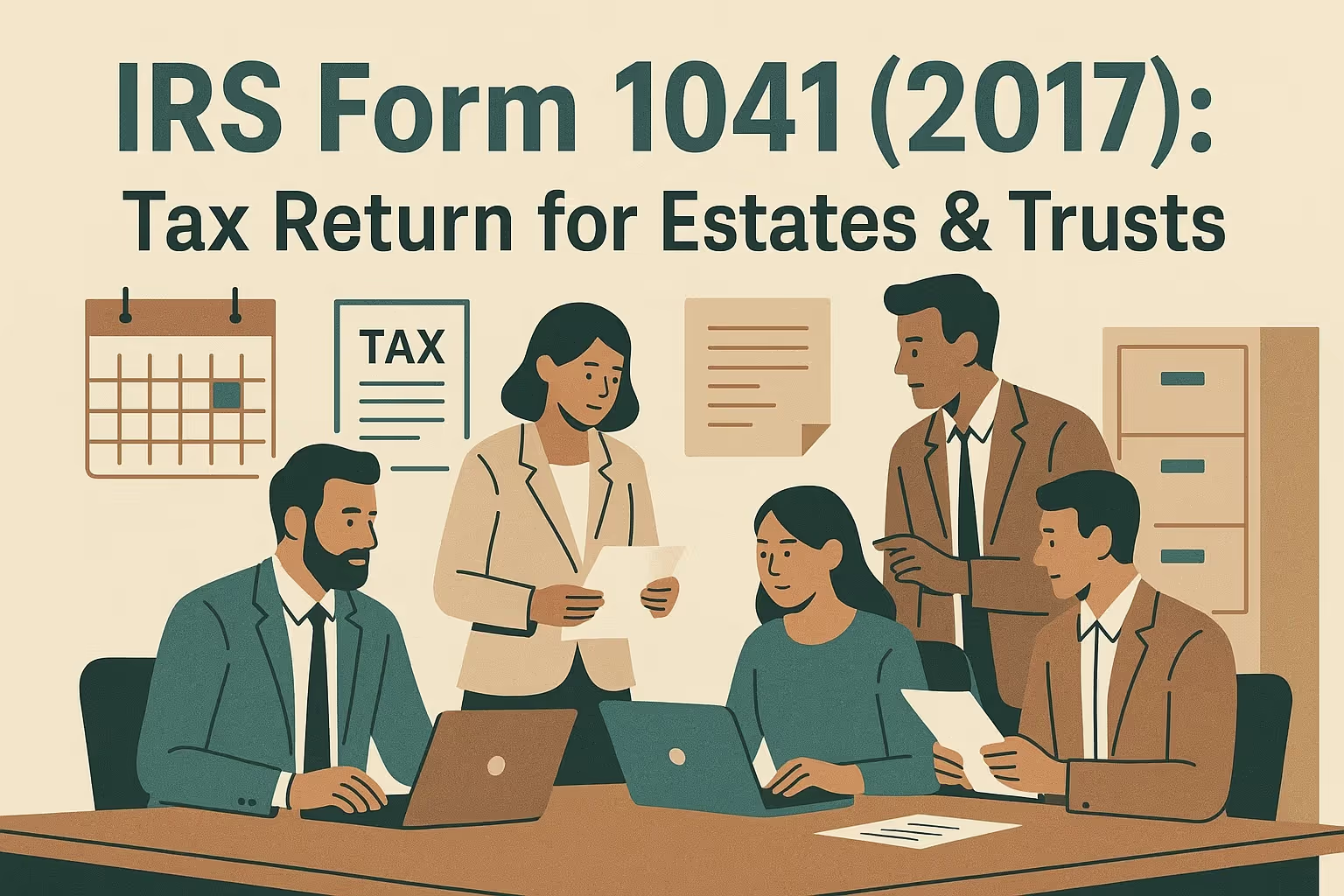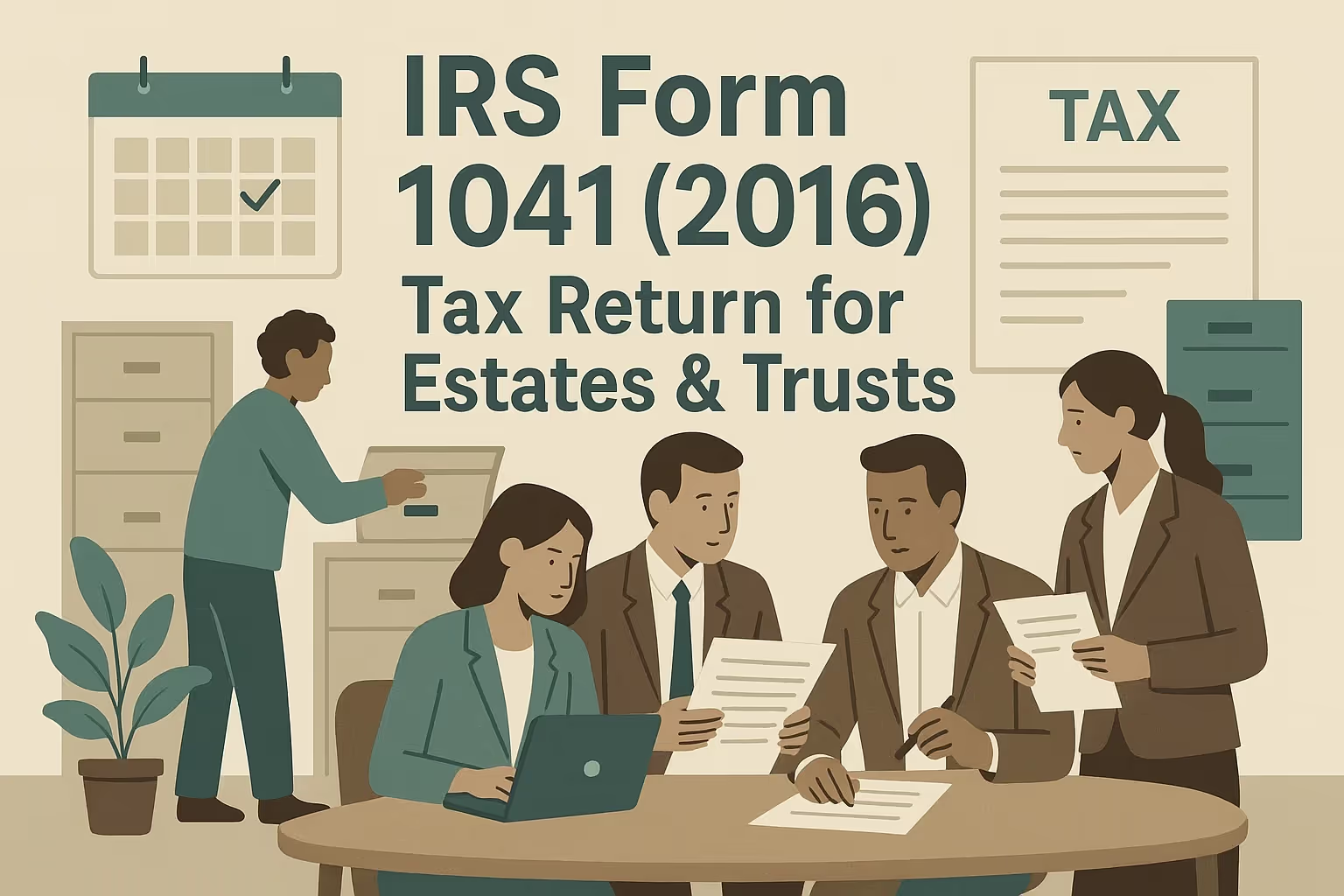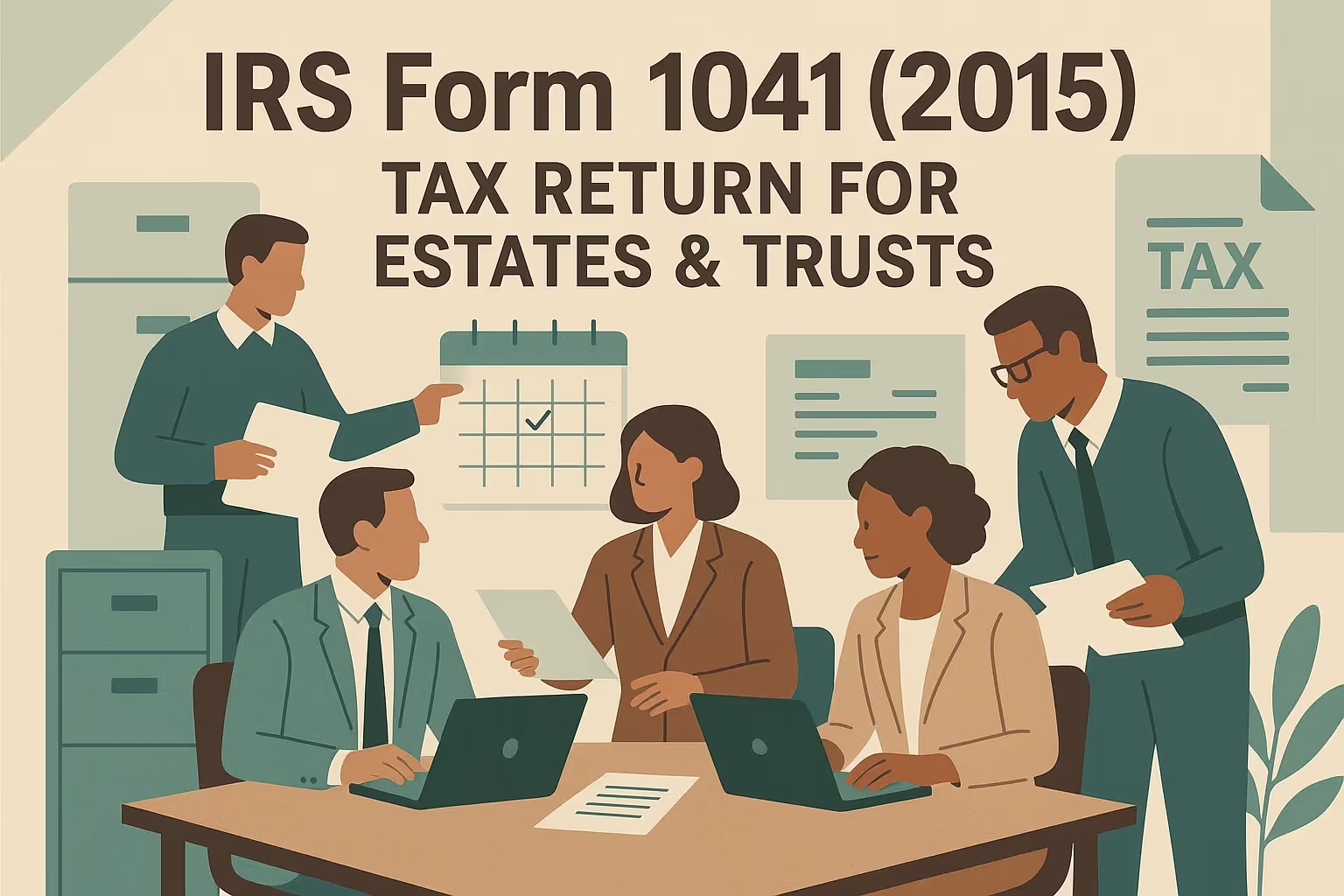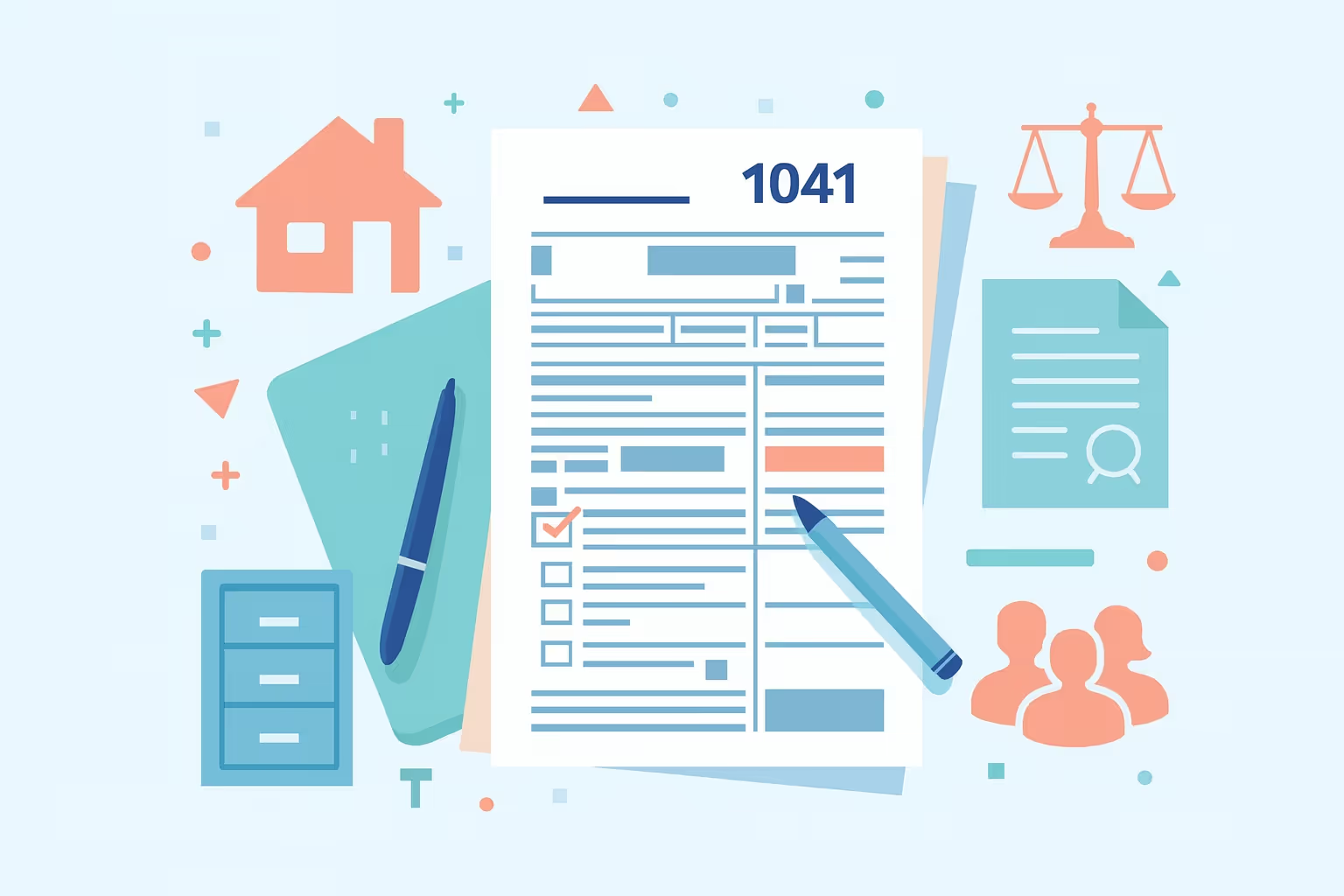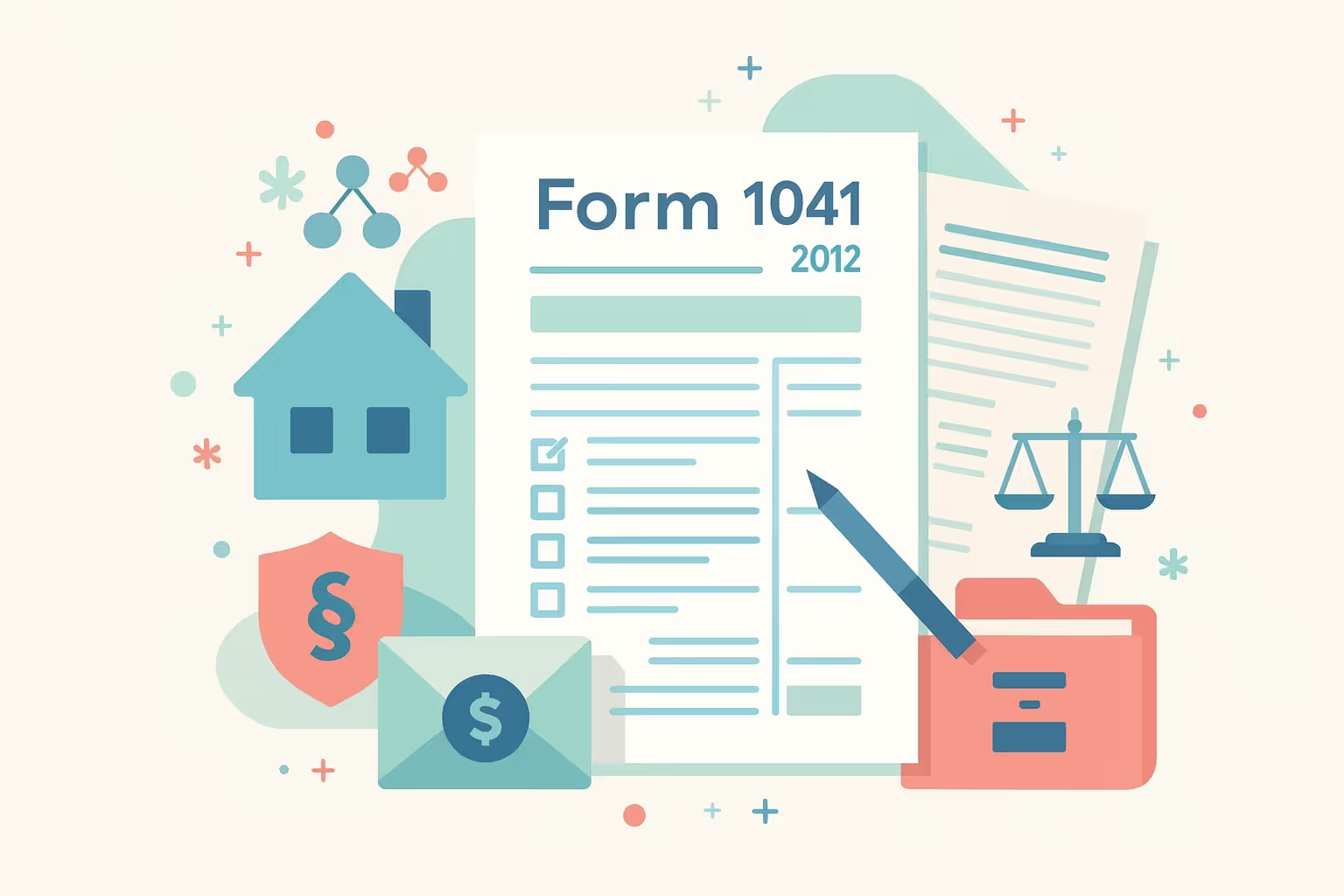IRS Form 1041 (2023): Tax Return for Estates & Trusts
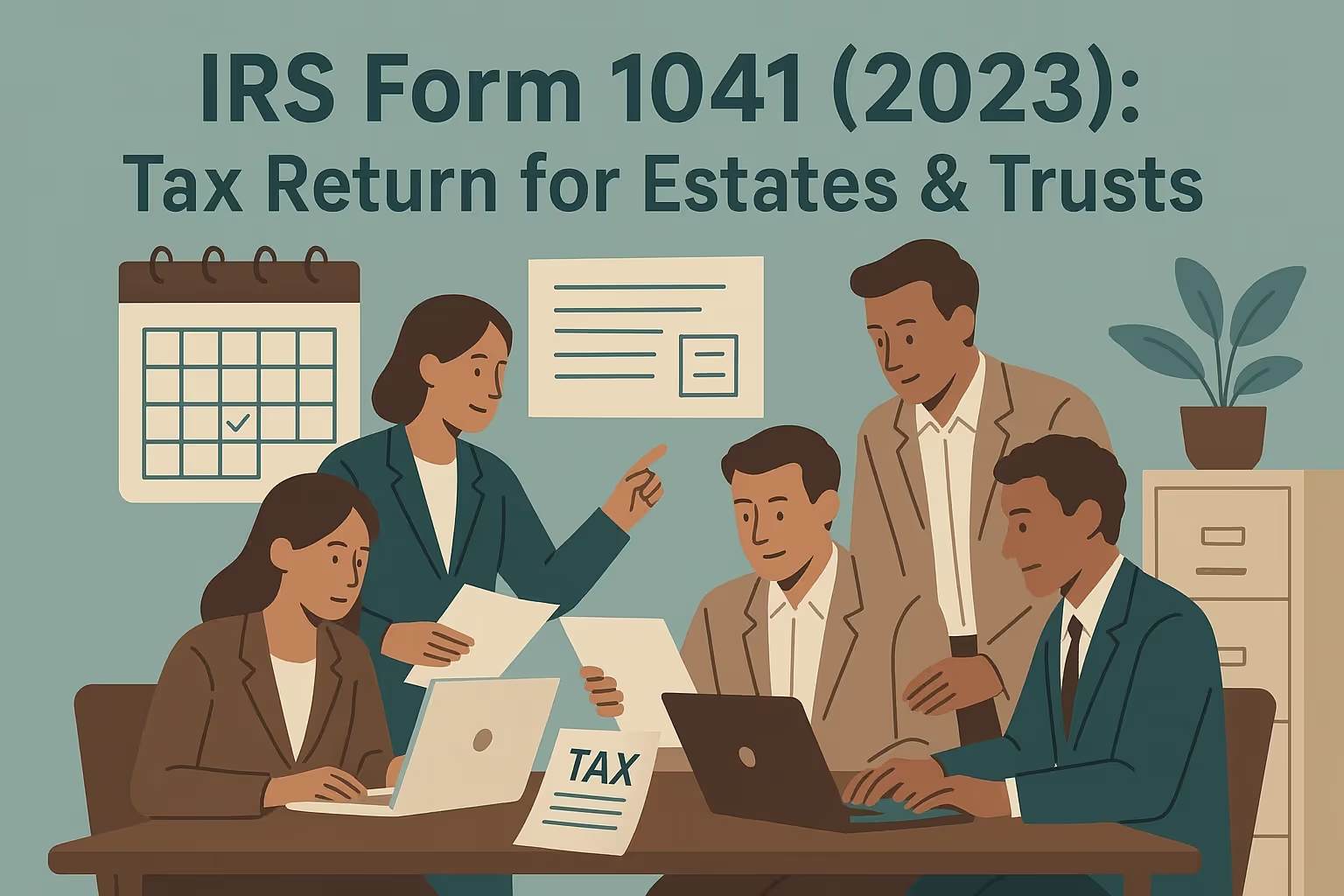
What IRS Form 1041 (2023) Is For
IRS Form 1041 (2023) is the income tax return used by fiduciaries—trustees, executors, or administrators—to report income, deductions, gains, losses, and tax liability for domestic estates and trusts. The IRS requires taxpayers to file this income tax return if the estate or trust has gross income of $600 or more, any taxable income, or a nonresident alien beneficiary. Refer to IRS Instructions for Form 1041 (2023) and related publications for complete filing requirements.
When You’d Use Form 1041 for 2023 (Late or Amended Filing)
You should file your tax return for 2023 if you missed the original due date of April 15, 2024. A late filing may trigger penalties or interest, so it’s best to act promptly. Amended filings are required if you need to correct income, deductions, or distributions. Examples include updated K-1s for affected beneficiaries or balance adjustments due to prior errors. Refund claims must be submitted within three years of the original filing date or two years from when taxes were paid—whichever is later.
For more resources on filing or understanding prior-year IRS forms, visit our guide on Form 1041 – Income Tax Return for Estates & Trusts.
Key Rules Specific to 2023
- Capital Gains Rate: Estates and trusts pay a maximum 20% capital gains tax rate when taxable income exceeds $14,650 for the year.
- 0%, 15%, and 20% Tiers: The 0% rate applies to taxable income up to $3,000, the 15% rate applies from $3,000 to $14,650, and the 20% rate applies to income above that threshold.
- Bankruptcy Estate Filing: A bankruptcy estate is required to file an income tax return if its gross income is $13,850 or more.
- Qualified Disability Trusts: Qualified disability trusts may claim a personal exemption of up to $4,700 for the 2023 tax year.
- Late-Filing Penalty: The minimum late-filing penalty for a return filed more than 60 days after the due date is $485 or the total tax due, whichever amount is less.
If underpayment of estimated tax occurs, use Form 1041-ES to calculate and pay electronically. IRS tools allow you to register, check refund status, and find updated payment information securely—look for the locked padlock icon on the IRS website.
Step-by-Step (High Level)
- Gather Transcripts and Records: Request IRS account transcripts online, by calling 800-908-9946, or by filing Form 4506-T.
- Complete the 2023 Form: Use the correct year’s forms and instructions. Ensure Social Security Numbers and EINs are accurate.
- Attach Required Schedules: Include all schedules, such as A, B, and G, as well as each beneficiary’s Schedule K-1.
- Choose Filing Method: E-file to avoid delays, or mail your completed return to the proper state processing center.
- Keep Copies: Retain all submitted forms, schedules, and proof of payment for a minimum of three years.
These steps apply whether you file on behalf of an estate, trust, or a related business entity, such as a partnership, S corporation, or corporation.
Common Mistakes and How to Avoid Them
- Mixing Fiduciary and Beneficiary Income: Report all income and deductions correctly on Form 1041; distribute beneficiary income using Schedule K-1.
- Forgetting Amended K-1s: Always provide corrected K-1s to affected individuals when filing amended returns.
- Using Wrong Year Forms: File only with 2023 forms for 2023 income. Misusing prior-year or updated forms may cause rejection.
- Missing Fiscal Year Rules: Estates may elect fiscal years, but most trusts are required to use a calendar year.
- Incomplete Amendment Explanations: Clearly state what changes were made and why.
- Ignoring Estimated Taxes: Use Form 1041-ES if expecting to owe $1,000 or more in taxes for the year.
Accurate calculations, on-time payments, and complete information help taxpayers avoid penalties and interest.
What Happens After You File
Processing time varies. Paper returns typically take 6–8 weeks to process, while e-filed returns are processed within 2–3 weeks. Penalties apply at 5% per month on unpaid balances (up to 25%), or up to 75% if fraud is proven. Interest accrues daily on unpaid tax amounts.
To pay electronically, use EFTPS, debit or credit card, or a check. Taxpayers may apply for installment agreements through IRS Collections if they are unable to pay the full amount. Always check the refund status and verify that your payment has been posted correctly.
FAQs
What’s the deadline for amending a 2023 return?
You generally have three years from the original filing date or two years from the date of payment, whichever is later. For calendar-year estates and trusts, the amendment deadline is April 15, 2027. File electronically to ensure faster processing and maintain a record of your files.
Do I need to pay penalties and interest on the late 2023 returns?
Yes, if taxes are unpaid after the due date, the IRS assesses a late filing penalty of 5% per month and a late payment charge of 0.5% per month. Interest accrues on the outstanding balance until it is paid in full. You may request penalty relief by showing reasonable cause.
Should I get tax transcripts before filing late returns?
Yes, IRS transcripts help verify income, payments, and prior filings. They prevent duplicate reporting or missed credits. You can request transcripts online, by mail, or by phone. Having this info before you file your tax return helps avoid delays.
Can estates and trusts get refunds for overpaid 2023 taxes?
Yes, if you overpaid through withholding, estimated tax, or adjustments, you can claim a refund by filing a completed return. Refunds are typically received within weeks after processing. Visit IRS.gov for secure refund tools and check the refund status by date.
Must I file amended state returns if I amend federal Form 1041?
Most states require amended returns when the federal version changes. If you amend your federal income tax return, review your state’s requirements, forms, and limitations. State tax agencies may impose separate due dates and penalties for unreported changes.
For more resources on filing or understanding prior-year IRS forms, visit our Forms Hub.






